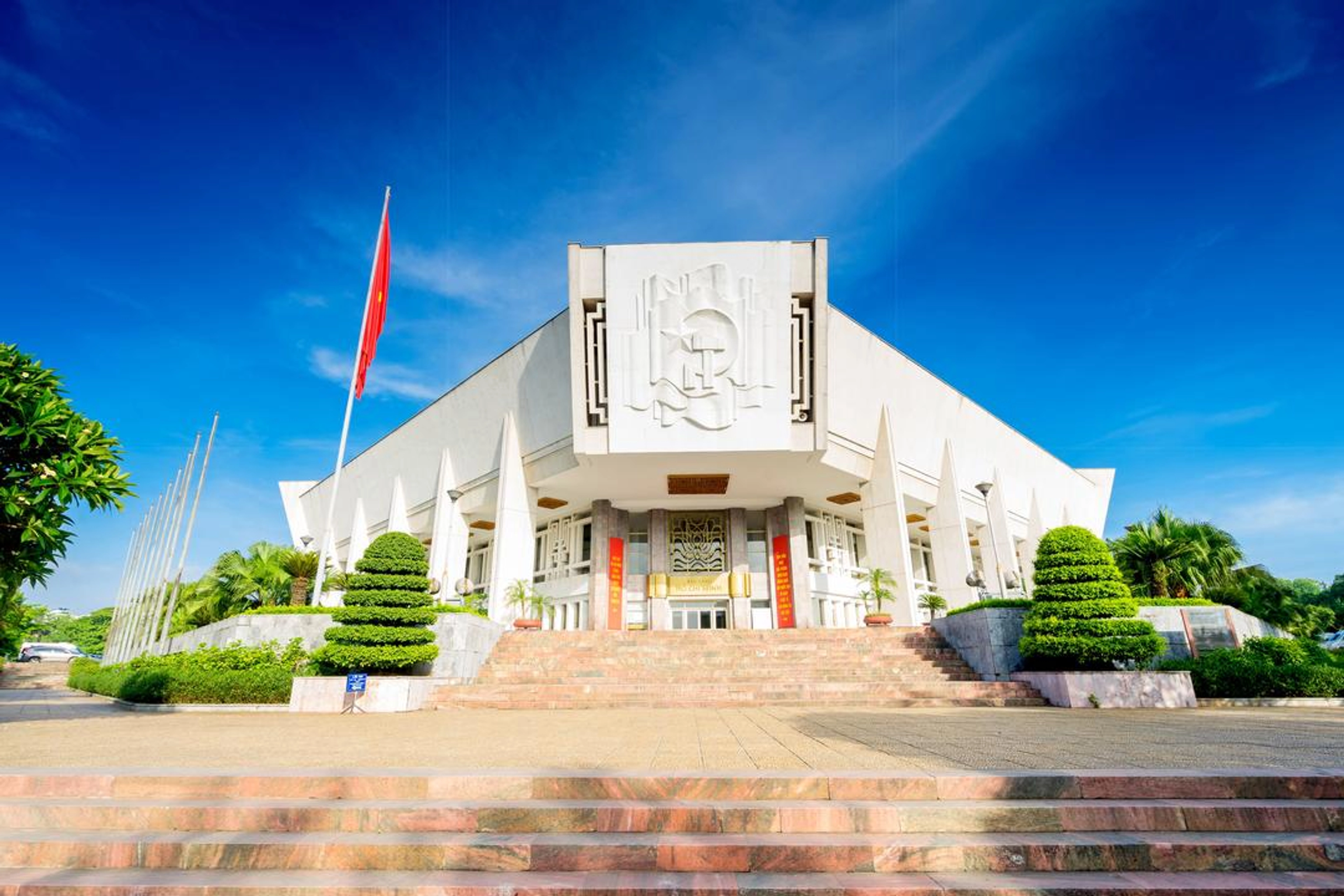

Are you interested in learning more about the life and career of Uncle Ho, the revered father of the Vietnamese nation? Join BDATrip in exploring the Ho Chi Minh Museum - one of Hanoi's most renowned historical and cultural sites.
The Ho Chi Minh Museum, a stunning architectural masterpiece rich in Vietnamese cultural and historical significance, has evolved through a series of critical events. Initiated in 1973, the Party and State decided to construct the museum to honor Uncle Ho and educate future generations about the nation's patriotic heritage and Ho Chi Minh's moral principles. Construction commenced in 1975 on a 10-hectare site within the Ho Chi Minh National Historical Relic Site, where Uncle Ho had lived and worked, and where he now rests.
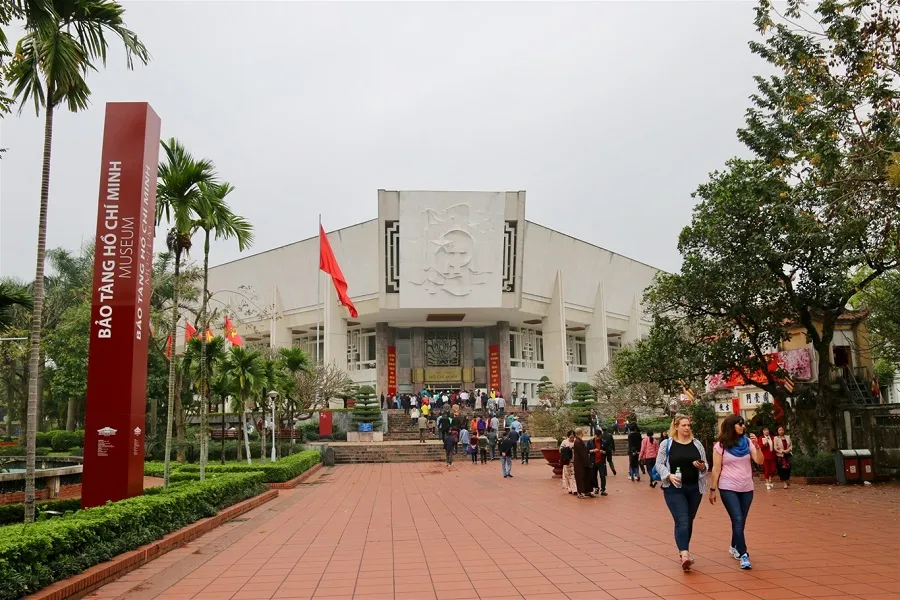
Completed in 1985 at a cost of 14.5 billion VND, the museum represents the collaborative efforts of scientists, artists, engineers, and builders from both Vietnam and the Soviet Union. Officially opened in 1990, coinciding with the centennial celebration of Uncle Ho's birth, the museum has become a special historical and cultural destination in Hanoi, attracting millions of visitors annually. In 2000, the museum underwent an upgrade and expansion with support from the Japanese government, enhancing its array of artifacts, documents, artworks, and modern facilities.
In 2010, the museum was designated a National Historical-Cultural Relic, a significant milestone affirming its status as one of the leading museums in Vietnam and the region. In 2020, the museum's contributions were recognized with a nomination for the International Museum Award from the International Council of Museums (ICOM), underscoring its historical, cultural, educational, and artistic value and its role in the nation's and humanity's development.
Situated at 19 Ngoc Ha, Doi Can ward, Ba Dinh district, Hanoi, within the Ho Chi Minh National Historical Relic Site, the Ho Chi Minh Museum is more than just a cultural spot; it's a site of historical significance. It's where Uncle Ho lived and worked from 1954 to 1969 and has been his final resting place since 1969.

Open from Tuesday to Sunday, the museum welcomes visitors from 8 AM to 11:30 AM and from 2 PM to 4 PM. Ticket prices are set to accommodate all: 40,000 VND for adults, 20,000 VND for students, and 10,000 VND for schoolchildren. Admission is free for children under 6 and for those who have contributed to the revolution, ensuring accessibility for all to learn about Uncle Ho's life and work.
The Ho Chi Minh Museum in Hanoi is a testament to the subtlety and profound cultural meaning of Vietnam, inspired by the lotus flower - a symbol of purity and nobility. The museum's structure, with its square shape, each side measuring 18m in length and standing 13.5m high, presents a robust and harmonious appearance.
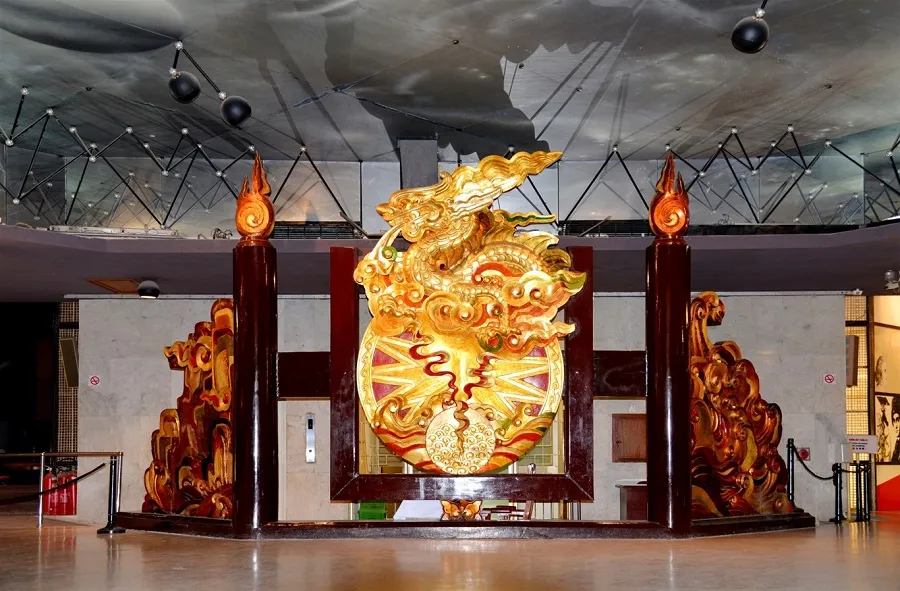
The museum's front is highlighted by a 3.6m tall bronze statue of Uncle Ho, set on a rectangular stone base, encapsulating historical and cultural value. The back of the museum, engraved with "Ho Chi Minh Museum" in Vietnamese, English, and French, represents a cultural crossroads and openness to the world.
The first floor of the Ho Chi Minh Museum delves into Uncle Ho's life journey from birth to his final days. Visitors will witness an extensive collection of photographs, artifacts, documents, maps, models, paintings, statues, letters, and speeches relating to Uncle Ho and his relatives, friends, and comrades.
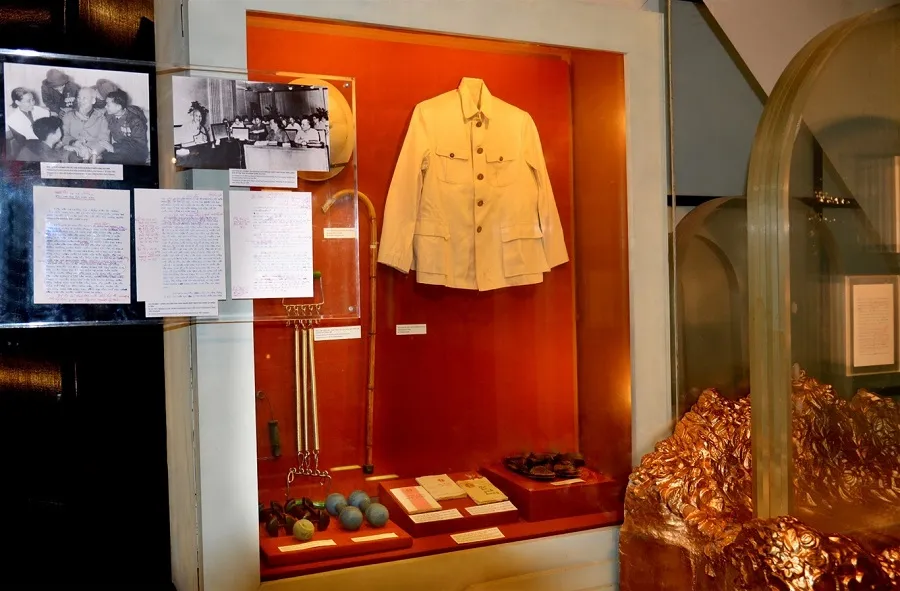
This floor is divided into five sections, each reflecting a different phase of Uncle Ho's life:
- Nguyen Sinh Cung - Nguyen Tat Thanh - Nguyen Ai Quoc (1890 - 1941): Focusing on his hometown, family, childhood, education, and revolutionary activities, both in Vietnam and abroad, from birth until his second return to the country.
- Ho Chi Minh - President of the Democratic Republic of Vietnam (1941 - 1954): Showcasing the establishment of the Communist Party of Vietnam, Viet Minh, the Democratic Republic of Vietnam, the People's Army of Vietnam, and governments led by Uncle Ho, as well as resistance wars against foreign invaders from his second return to the signing of the Geneva Accords.
- Ho Chi Minh - Revolutionary Leader of Vietnam (1954 - 1960): Depicting the economic, political, cultural, social, defense, and security development of the Democratic Republic of Vietnam, as well as Uncle Ho's revolutionary activities from the Geneva Accords until the 4th Congress of the Communist Party of Vietnam.
- Ho Chi Minh - Revolutionary Leader of Vietnam (1960 - 1969): Exploring the continuation of the resistance against the United States and Uncle Ho's revolutionary activities from the 4th Congress of the Communist Party of Vietnam until his death.
- Ho Chi Minh - National Liberation Hero and Distinguished Cultural Figure (1969 - present): Presenting the continuation of the resistance against the United States and activities commemorating, honoring, and following the moral example of Uncle Ho by the military and people of Vietnam from his death to the present.
Additionally, the third floor features a film screening room, where documentaries and audiovisual recordings about Uncle Ho and the Vietnamese Revolution are shown, offering deep insights and emotional experiences about his remarkable life.
The second floor of the museum is dedicated to the glorious military victories of the Vietnamese people under the leadership of Uncle Ho, spanning from 1945 to 1975. This floor is divided into four sections, each corresponding to a different stage of the resistance against the United States for national salvation:
- Phase 1 (1954 - 1960): Reflects the beginning of the resistance and Uncle Ho's revolutionary activities, starting from the Geneva Accords to the 4th Congress of the Communist Party of Vietnam.
- Phase 2 (1960 - 1968): Describes the development of the resistance and Uncle Ho's revolutionary initiatives, from the 4th Congress of the Communist Party of Vietnam to the Trinh-Kieu Conference.
- Phase 3 (1968 - 1973): Explores significant advances in the resistance, as well as Uncle Ho's activities, from the Trinh-Kieu Conference to the signing of the Paris Peace Accords.
- Phase 4 (1973 - 1975): Presents the final stage of the resistance, from after the Paris Peace Accords to Uncle Ho's death.
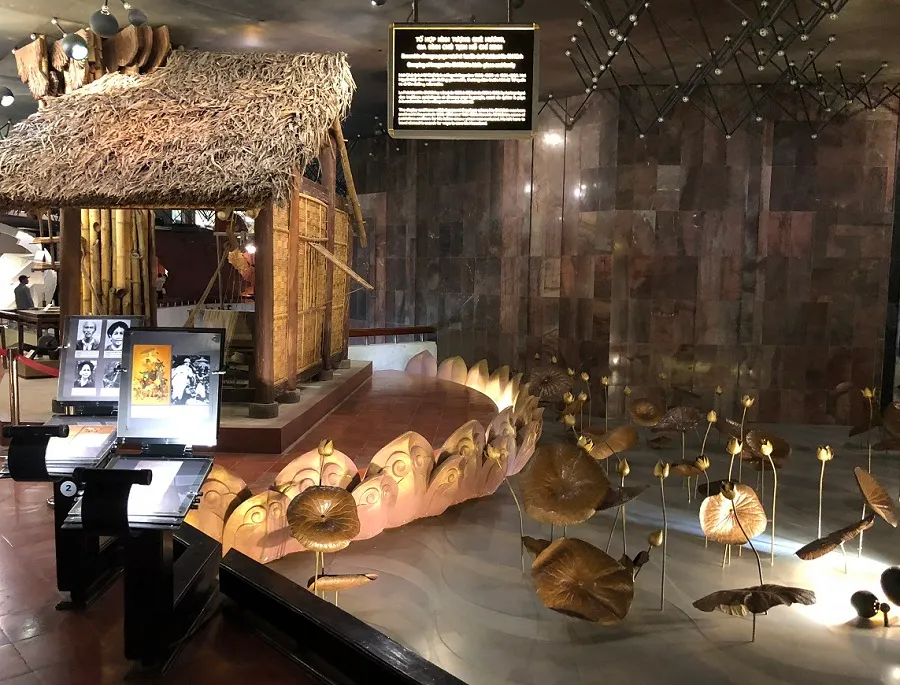
The second floor also features a cinema room, showcasing documentaries and recordings about the resistance and Uncle Ho's life, providing an educational and emotional experience.
The third floor of the Ho Chi Minh Museum is designed to explore significant milestones in Uncle Ho's life and career. This floor is divided into five sections, each corresponding to a notable historical milestone in Uncle Ho's life:
- Uncle Ho's Birthday (19/5/1890): Focuses on his hometown, family, childhood, education, and revolutionary activities, both in Vietnam and abroad, from birth until his second return to the country.
- Founding of the Communist Party of Vietnam (3/2/1930): Highlights the birth of the Communist Party and Uncle Ho's revolutionary activities, from his second return to the country until the signing of the Geneva Accords.
- National Day of Vietnam (2/9/1945): Introduces the establishment of the Democratic Republic of Vietnam and Uncle Ho's initiatives, from the Geneva Accords to the 4th Congress of the Communist Party of Vietnam.
- Uncle Ho's Death Anniversary (2/9/1969): Reflects the continuation of the resistance against the United States and activities commemorating, honoring, and following the moral example of Uncle Ho by the military and people of Vietnam, from his death onwards.
- Uncle Ho Awarded the Diamond Order (6/6/1976): Describes the end of the resistance against the United States and activities commemorating, honoring, and following the moral example of Uncle Ho by the military and people of Vietnam, from after his death.
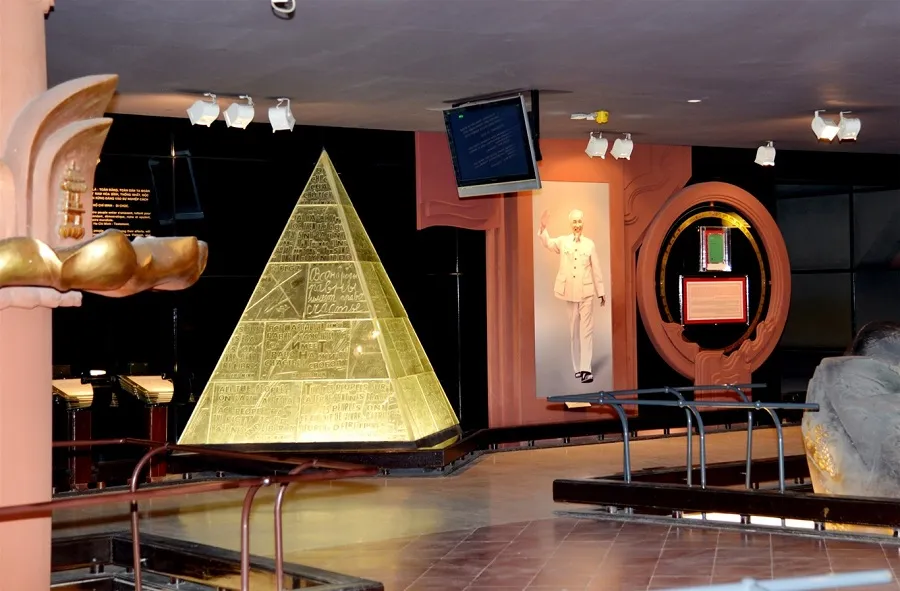
In addition, the third floor also features a cinema room, where documentaries and audiovisual recordings about Uncle Ho and the Vietnamese Revolution are shown, offering deep insights and emotional experiences about his remarkable life.
To have an interesting and meaningful museum visit, please note the following points:
- Avoid wearing revealing or offensive clothing, especially with images, writings, or symbols that insult.
- Do not bring weapons, explosives, flammable materials, alcohol, cigarettes, or banned substances.
- Do not litter, eat, smoke, or engage in any biological behaviors in the exhibition area.
- Do not touch, damage, or steal artifacts and documents.
- Show respect for Uncle Ho, museum staff, and other visitors.
- Participate in guided programs and interactive sessions for a deeper understanding.
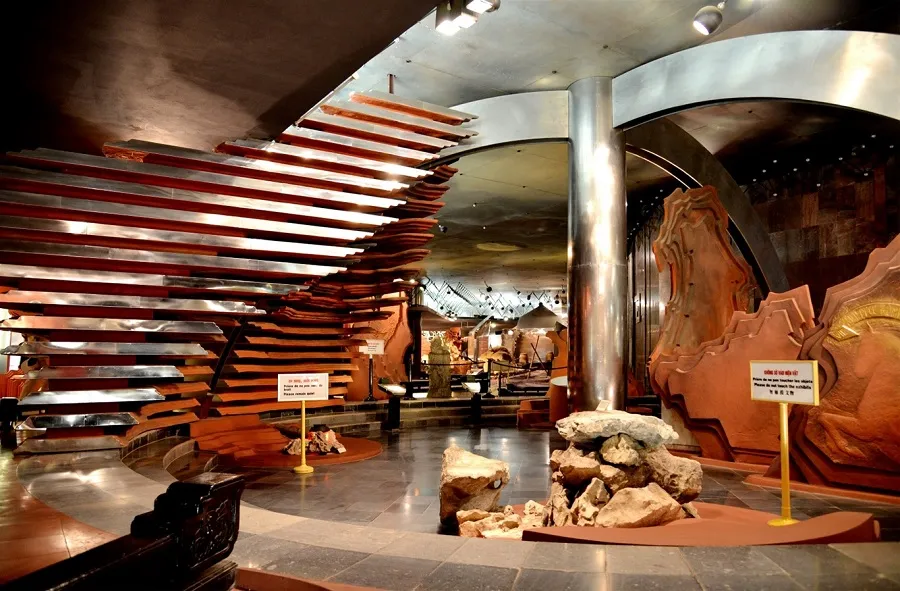
After exploring Hanoi's Ho Chi Minh Museum, continue your journey into Vietnamese culture and history at other fascinating attractions:
- Ho Chi Minh Mausoleum: The final resting place of Uncle Ho, with an octagonal architecture featuring white stone and a red roof. When visiting the mausoleum, be sure to follow the dress and behavior regulations.
- Uncle Ho's Stilt House: Where Uncle Ho lived and worked from 1958 to 1969, built in the style of a traditional stilt house of the Northwest region, made of ironwood and with a thatched roof. The house displays various artifacts, documents, and photographs related to Uncle Ho's life.
- Hanoi Botanical Garden: The largest and oldest botanical garden in Hanoi, established in 1890, covering an area of 10 hectares. The garden showcases over 2,000 plant species, including ornamental plants, medicinal plants, economic plants, and rare species. It's an ideal place for sightseeing, learning, research, and leisure activities.
- Vietnam Women's Museum: A specialized museum about Vietnamese women, established in 1987, with a space of 2,000 square meters. It exhibits over 25,000 artifacts, documents, photographs, audio recordings, and videos about the history, culture, life, and revolutionary activities of Vietnamese women across different periods. Visitors can explore and admire the contributions of Vietnamese women.
- Vietnam Museum of Ethnology: A museum dedicated to ethnology in Vietnam, established in 1997, with a space of 9,000 square meters. It displays over 15,000 artifacts, documents, photographs, audio recordings, and videos about the history, culture, life, beliefs, and arts of the 54 ethnic groups in Vietnam. The museum offers an opportunity to discover, learn, and experience the diversity and richness of Vietnamese ethnic cultures.
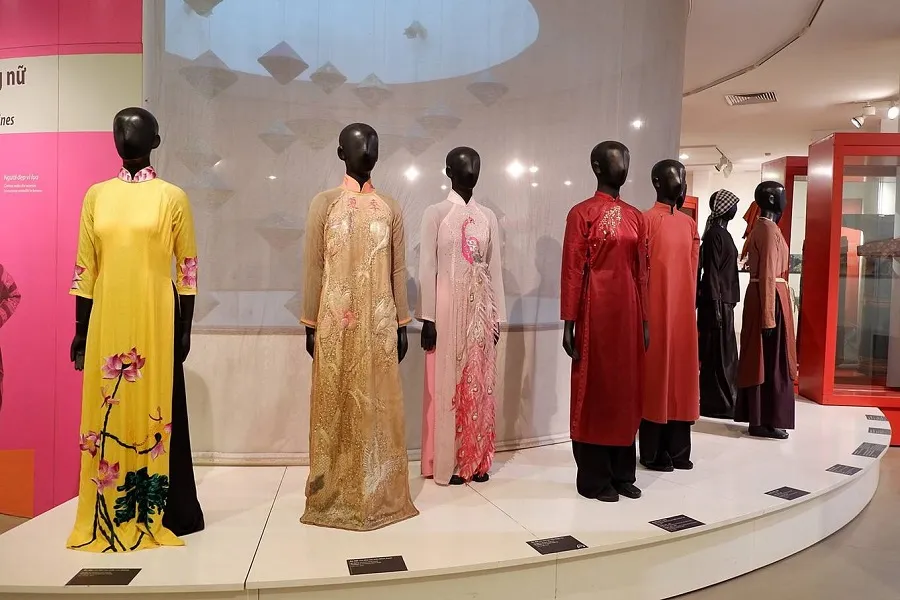
After exploring the Ho Chi Minh Museum, you can enjoy rest and dining at nearby locations:
- Melia Hanoi Hotel: A luxurious 5-star hotel located at 44 Ly Thuong Kiet, about 1.5 km from the museum. With 306 elegant rooms, a swimming pool, gym, spa, restaurant, and bar, as well as airport shuttle service and car rental, Melia offers an ideal resting spot. Room rates range from 2.5 to 6 million VND per night.
- Sen Ho Tay Restaurant: Located at 614 Lac Long Quan, about 2 km from the museum, this famous restaurant specializes in Vietnamese cuisine, including hot pot, grill, seafood, noodles, and pho, in a spacious and airy setting with views of West Lake. Prices are reasonable, ranging from 100,000 to 300,000 VND per person.
- Trung Nguyen Legend Café: Situated at 52 Le Hong Phong, just 500 meters from the museum, this popular café offers high-quality Vietnamese coffee in a cozy and elegant atmosphere with wifi and newspapers. Prices range from 20,000 to 50,000 VND per cup.
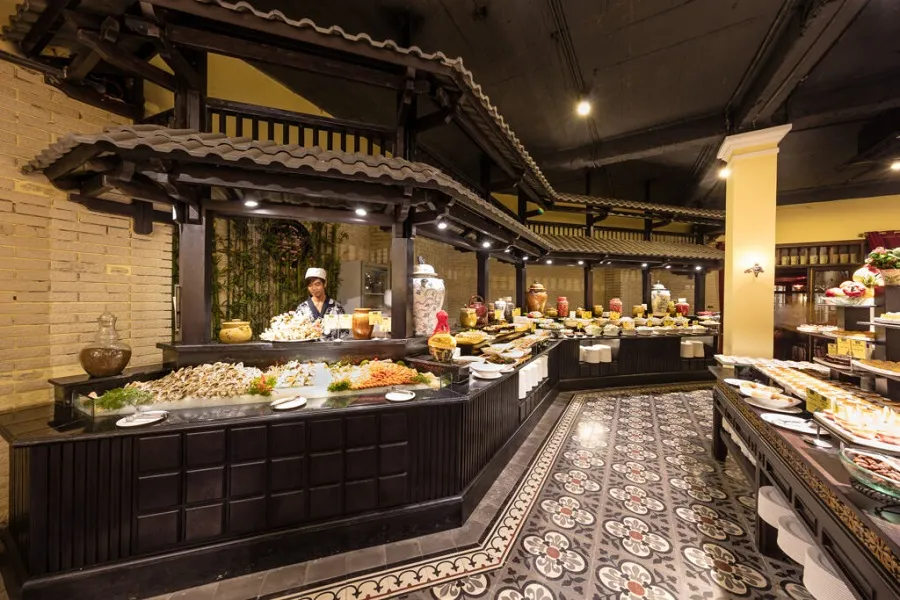
The Ho Chi Minh Museum is not only a significant historical and cultural destination in Hanoi but also an opportunity for visitors to experience creative arts and gain a deeper understanding of Uncle Ho and the Vietnamese people. Don't forget to enjoy dining and relaxing at these nearby places to enrich your journey.
Famous tourist destinations in Hanoi:
Copyright © 2022 BDATrip.com | All rights reserved.